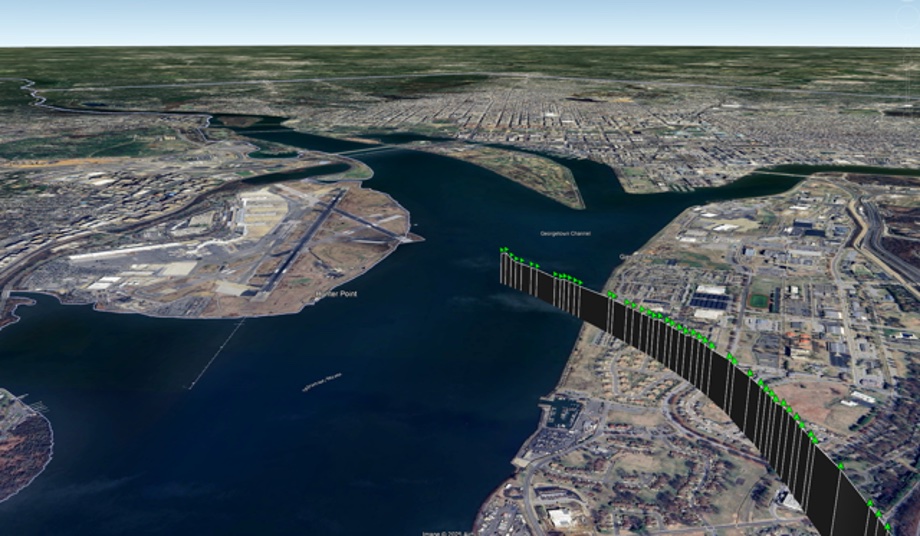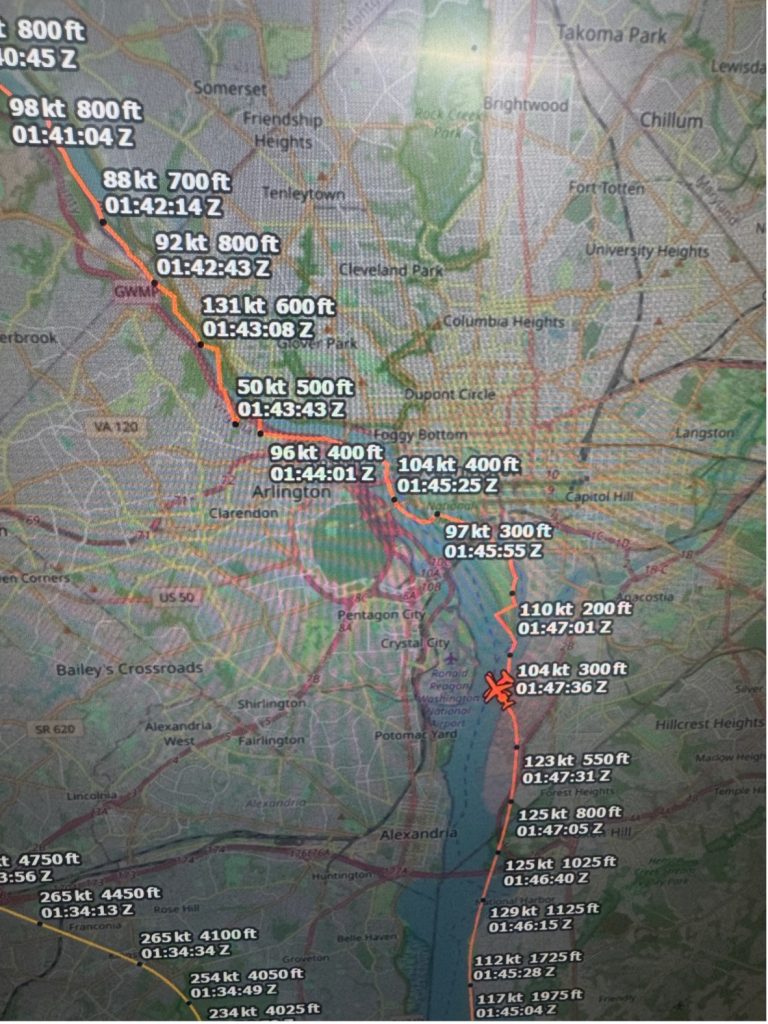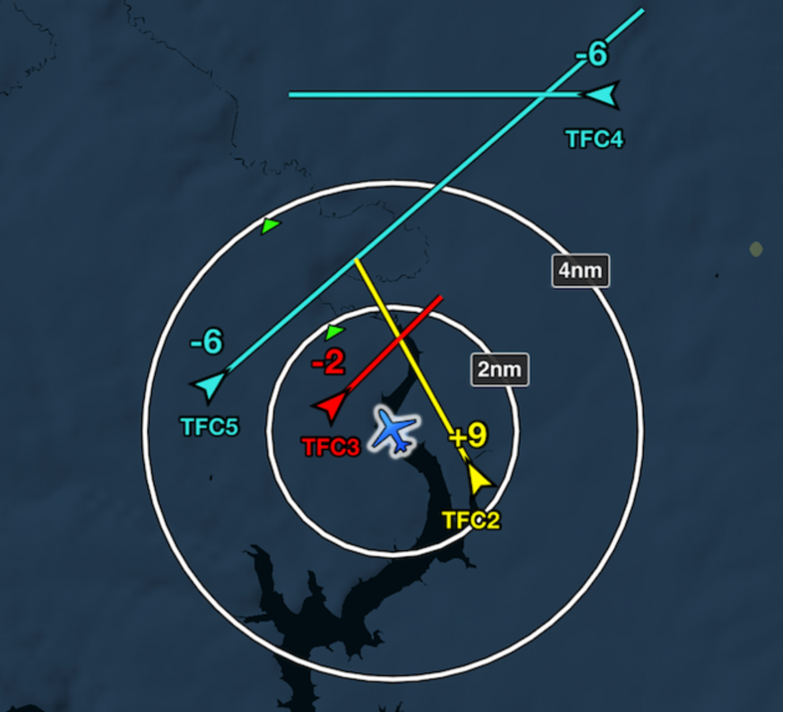Editor’s Note: Jon Damush, uAvionix CEO, provides context on existing technological safeguards that can help prevent aircraft collisions like the one near Washington, DC on Jan 29.
A terrible thing happened on the night of January 29th in Washington DC, within view of our Nation’s capital. A U.S. Army Blackhawk helicopter collided with an American Eagle Regional Jet over the Potomac river, killing all 67 people aboard both aircraft.
Any loss of life is a terrible thing, but this specific accident is very disturbing for me because as a licensed commercial pilot and flight instructor with multi-engine and instrument ratings, and being CEO of an aviation technology company, I know that technology is available that could have prevented this accident.
Why wasn’t it being used? Some of it was…but not ALL of it and not EVERYWHERE. It may be shocking to know that our current approach to regulations and policy is that it usually does not change until something like this happens. In parallel, subtle exceptions to rules creep in from a variety of sources over time. We are left with a largely safe system, but one that has various ‘gaps’. While these ‘gaps’ might be small, when they line up, catastrophic events can occur, like this collision.
Below is a map image that illustrates the path of the American Eagle Regional Jet. This path is consistent with a visual approach to runway 33 at Reagan National Airport. This approach is often used for regional jets because they can use the shorter runway (Runway 33), allowing controllers to more efficiently move traffic on Runway 1 (the primary runway) as well as the ramp areas. uAvionix systems are able to track this data using Automatic Dependent Surveillance-Broadcast (ADS-B). Put simply, ADS-B is a way for an aircraft to share its own position (referred to as Ownship) with air traffic control and other aircraft in the area. It shares this information over a radio signal that broadcasts every 1 sec (referred to as 1 Hertz (Hz). In the USA, all commercial and private aircraft are required by regulation to transmit ADS-B position when in specific classes (areas) of the National Airspace (NAS). The DC airspace is one of those areas, so the airliner was compliant and was transmitting ADS-B, as you can see in the image. Notice the helicopter’s path is not illustrated. That is because the Blackhawk helicopter, being a military aircraft, is not required to broadcast ADS-B (nor is it required to receive ADS-B), and as such, is not picked up by ADS-B receivers.

Also required in this class of airspace is a device known as a transponder. A transponder responds to a radio frequency signal (referred to as an interrogation, usually emitted by a ground based radar) and returns data about the aircraft’s type, callsign and altitude as measured by equipment on the aircraft. This allows air traffic controllers to receive higher quality altitude data about each aircraft than the radar itself can provide (most radars only return bearing and range information). In the case of this accident, both aircraft were equipped with transponders and both transponders were sharing position information. The image below shows the transponder tracks for each aircraft.

In addition to ADS-B and transponders, all transport category aircraft operated under Part 121 of the FAA regulations (14 CFR 121) are also required to have a system called Traffic Collision Avoidance System (TCAS) aboard. TCAS uses the transponders on each aircraft to query other aircraft’s transponders to determine if they are on a collision course. If the systems determine they are on a collision course, warnings and commands are issued to the flight crew from the TCAS. These are known as Traffic Advisories (TA) and Resolution Advisories (RA). A TA is for awareness only, but an RA is a command that must be followed by the crew immediately.
So why didn’t the TCAS tell the American Airlines crew to do something? Well, the airport environment is a busy place with aircraft operating very near each other. Further, the final approach segment for a flight crew is a high workload time of flight. Since the TCAS would likely trigger a large number of TA’s and the potential for false RA’s at low altitude, it is suppressed below 1,000 feet above ground level (AGL). Specifically, there are no RA’s issued below 1,000 feet AGL, and all TA’s are muted below 500 feet AGL. This accident occurred at roughly 300 feet AGL.
The U.S. Army Blackhawk Helicopter is not required to have TCAS aboard, and even if it did, it would have been suppressed just as the American Airlines jet’s was.
This is point #1 – in this type of airspace with this volume and proximity of traffic, why are all aircraft not required to use all available technology to avoid collision?
To address that, we must look at how aircraft are typically separated by pilots and air traffic control.
The last line of defense against mid-air collision is the human eyeball. The regulations (14 CFR 91.113) clearly spell out that it is the pilot’s responsibility to ‘see and avoid’ all other aircraft to avoid a collision. Most general aviation operations rely on this method to avoid collisions as most of the country is not covered by radar or managed by air traffic control. There are strategic and tactical operations that we use to minimize the chances of a mid-air collision – things like specific traffic patterns, cruising altitudes, right of way rules, radio calls – but at the end of the day, it is a human pilot looking out the window that is the last line of defense.
Air traffic control exists to assist the pilot with that task by deploying a variety of techniques and technologies ranging from calling out the position of other aircraft, to tracking aircraft on radar to issuing heading and altitude commands to pilots to help them navigate away from potential collisions. Controllers talk to pilots over good ol’ radios. Simplex radios, to be specific. Simplex means that only one person can broadcast at a time, and if two people key the microphone at the same time, they will cancel each other out (we call this getting ‘stepped on’). To help alleviate that risk, specific frequencies are used in different sectors of airspace, and the community uses a specific syntax, cadence and sequence of communication to minimize ‘two talking at once’. The system works remarkably well. Additionally, when all the pilots in a specific area are on the same frequency, we can all hear the communications between ATC and the other aircraft, allowing us each to form a mental picture of the aircraft in the airspace (something we call situational awareness, or SA).
So what happened in DC? Both aircraft WERE in communication with air traffic control, but they were NOT on the same frequency. Military aircraft use Ultra High Frequency (UHF) radios and civilian aircraft use Very High Frequency (VHF) radios. The helicopter and the airliner could not hear each other, nor could they hear what the controller was saying to the other aircraft. That is to say that the respective crew’s ability to build a mental picture of the airspace and aircraft in it was limited.
Additionally, when the weather conditions are clear, it is routine practice for a controller to call out traffic to a crew, something like “American 2135, traffic 12 o’clock and 4 miles is a United Boeing 737, report that traffic in sight”. If the crew responds saying they see the traffic, the controller can then direct the crew to ‘maintain visual separation’ with that traffic, effectively handing off the accountability for separation to the flight crew. It seems this happened properly on the night of the collision, with the controller calling out the airliner’s position to the helicopter crew and the helicopter crew acknowledging they had the traffic in sight. But there is a wrinkle in this…did the helicopter crew have the SAME aircraft in sight that the controller was calling out? If you look at the geometry of the aircraft just prior to the collision, there were likely TWO airliners within the field of view of the Blackhawk crew – the one they eventually collided with and a different airliner that was on final approach to a different runway at DCA much farther away. IF the Blackhawk crew looked up when the traffic was called and happened to see the more distant aircraft first, they MIGHT have acknowledged the controller that they had the aircraft in sight, but it was the wrong aircraft. This situation is demonstrated in the image below and a 3D model describes the view in this Washington Post article, (Washington Post – 3D Model of DC Plane Crash):

Put simply, if both aircraft were transmitting and receiving ADS-B, they would have likely both been aware of each other’s position in plenty of time to avert a collision. In our opinion, the only reason ADS-B equipage is not mandatory for ALL aircraft is that there have been too many opposing voices in our country, citing reasons like privacy, government overwatch, frequency and system saturation, etc. Those voices have been successful in ‘carving out’ specific exceptions to the rule the FAA enacted in 2020, mandating the use of ADS-B Out in specific classes of airspace for just about all types of aircraft, except military, law enforcement and some other special cases. Outside of those classes of airspace, ADS-B Out (or In) is not required.
In partnership with a Boeing subsidiary called ForeFlight, uAvionix manufactures and sells a device called a Sentry. It is a portable device that contains sensors and receivers that provide a pilot with their position, attitude and receipt of ADS-B data, which contains both weather information and traffic information. It connects wirelessly to Apple and Android devices allowing for traffic and weather data to be shown on a moving map in the cockpit. In the case of the DC mid-air, this device, if it were used on the Blackhawk helicopter, would have alerted the crew to the presence of the airliner (since the airliner was transmitting ADS-B), and potentially could have mitigated this disaster.


So there are a bunch of ‘Yes, IF’s…’ here:
- IF the Blackhawk helicopter had a Sentry and an iPad running ForeFlight, they would have been alerted to the airliner.
- IF the Blackhawk helicopter was broadcasting ADS-B, the airliner would have been alerted.
- IF both aircraft were talking to tower on the same frequency, they would have been more aware of each other’s position.
- IF we did not rely on human eyesight for the safe separation of aircraft…
- IF instead of a set of exceptions to rules, we had mandatory equipage of position reporting technology for ALL aircraft…
I resonate deeply with our company’s ‘why’ of radically innovating to make the skies open and safe for all. We have done the innovation part, and we continue to do so, aligned with this mission. It is sad and frustrating when I know we have the means to avoid these types of tragedies, but special cases and exceptions preclude those technologies from getting deployed. Nevertheless, this event strengthens our resolve to get our capabilities into the field to prevent this type of accident in the future. I firmly believe we not only have the technology to address these challenges, but that we can also assuage the concerns of those who have objections to the technologies in a positive way so that no one ever has to lose a loved one to a mid-air collision ever again.





